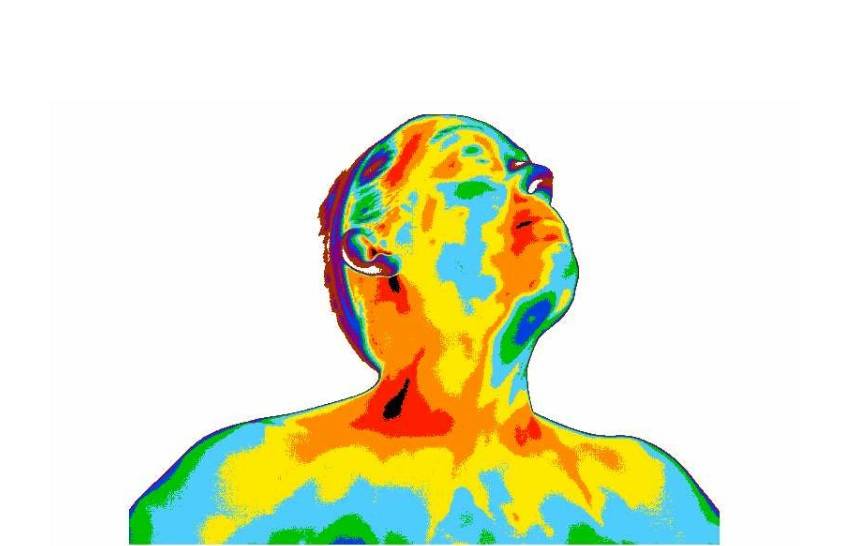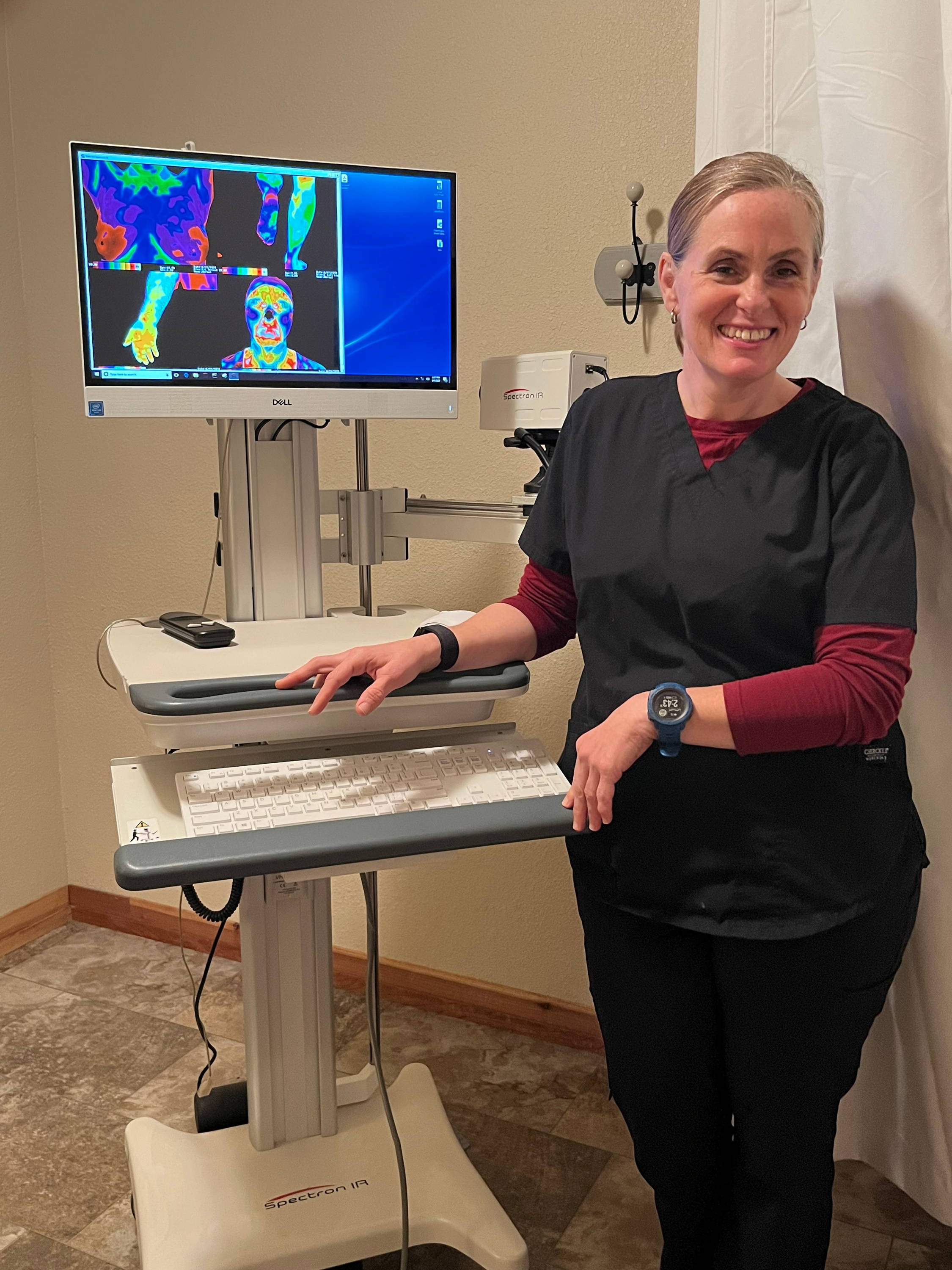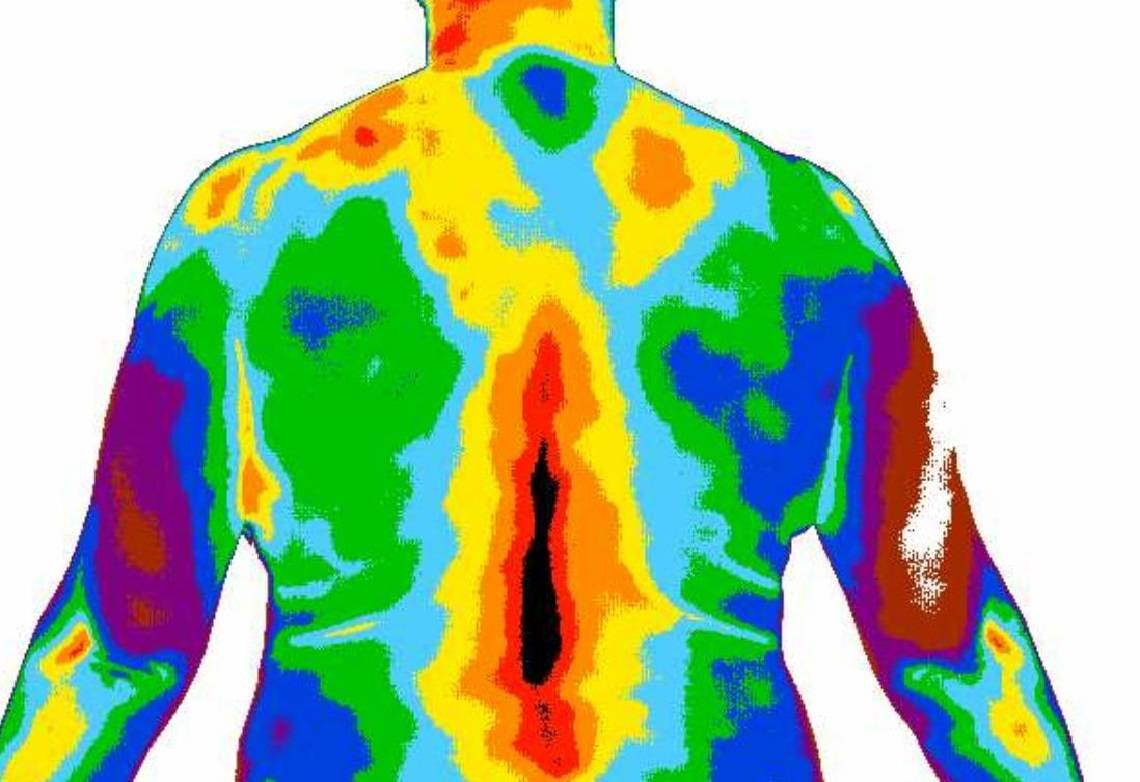What is Thermography
Thermography uses infrared imaging to generate highly detailed digital pictures. The military began using infrared imaging in the 1950's. Valued for its ability to detect and pinpoint areas of heat and movement, this technology provided a way for the military to "see' what and where the eye or other surveillance techniques couldn't -it is also known as "night vision".
While the FDA has approved breast thermography since 1982, the greatest developments in this field have emerged in just the last few years with the advent of digital photography and high-resolution digital imaging. What is extraordinary about these intricate images is that they are able to display patterns of heat and vascularity within the tissue itself. Patterns of heat and vascularity can reveal the earliest indications of disease while they are still in the formative stages. Thermography can also detect the presence of heat from an infectious process or from a pre-existing anatomical abnormality (i.e. lump) in the breast. Thermography is also the best way to detect soft tissue trauma or damage. It is a non-invasive, radiation-free, safe and painless process.

Thermography at Auburn Total Health


Meet Dr. Brewer Atkins
Dr. Brewer Atkins graduated from the Howard University College of Medicine in 1984. She works in Houston, TX and specializes in Family Medicine and Integrative Medicine. Dr. Brewer Atkins also specializes in woman's health and thermography. She is the Doctor that reads our Thermography Images.
Although we are not in Miami this video gives a great overview about thermography.
At Auburn Total Health both Amy and Kim are Certified Thermography Technicians. Your Images are sent to Dr. Brewer Atkins who interprets the image and provides a detailed report. All images must be viewed in comparison, usually three to six months apart. When you come in for your first image your initial appointment will include the cost of the second set of images taken for comparison purposes.
How to Prepare for Thermography Imaging
Before you arrive for your thermogram, certain protocols must be followed in order to ensure that your images reflect accurate information. Please read the following instructions and strictly adhere to them.
· No prolonged sun exposure (especially sunburn) to the body areas being imaged 5 days prior to the exam.
· No use of deodorants, lotions, creams, powders, or makeup ( no facial makeup for full body or upper body scans) the day of the exam.
· No shaving of the areas to be imaged the day of the exam.
· No treatment (chiropractic, acupuncture, TENS, physical therapy, electrical muscle stimulation, ultrasound, hot or cold pack use) or physical stimulation of the areas to be imaged for 24 hours before the exam.
· No exercise 4 hours prior to the exam.
· If bathing, it must be no closer than 1 hour before the exam.
· If you are using pain medications, please avoid taking them for 4 hours prior to the examination. You must consult with the prescribing physician for his or her consent prior to any change in medication use such as this .

· You must wait at least 4 weeks after having a fine needle or core biopsy of the breast before a thermogram can be performed.
· You must wait at least 8 weeks after having a lumpectomy or surgical biopsy of the breast before a thermogram can be performed.
· If you have had any surgical procedure within the last 12 weeks, please notify our office before coming in for your appointment.
Ø If you are scheduled for a breast thermogram, the same protocols above applies along with no physical stimulation of the breasts for 24 hours before the exam, and if you are nursing please try to nurse as far from 1 hour prior to the exam as possible.
Please note: During the examination you will be disrobed (from the waist up for breast exams, and buttocks exposed for lower body exams) during part of the examination for both imaging and to allow for the surface temperature of the body to equilibrate with the room.
